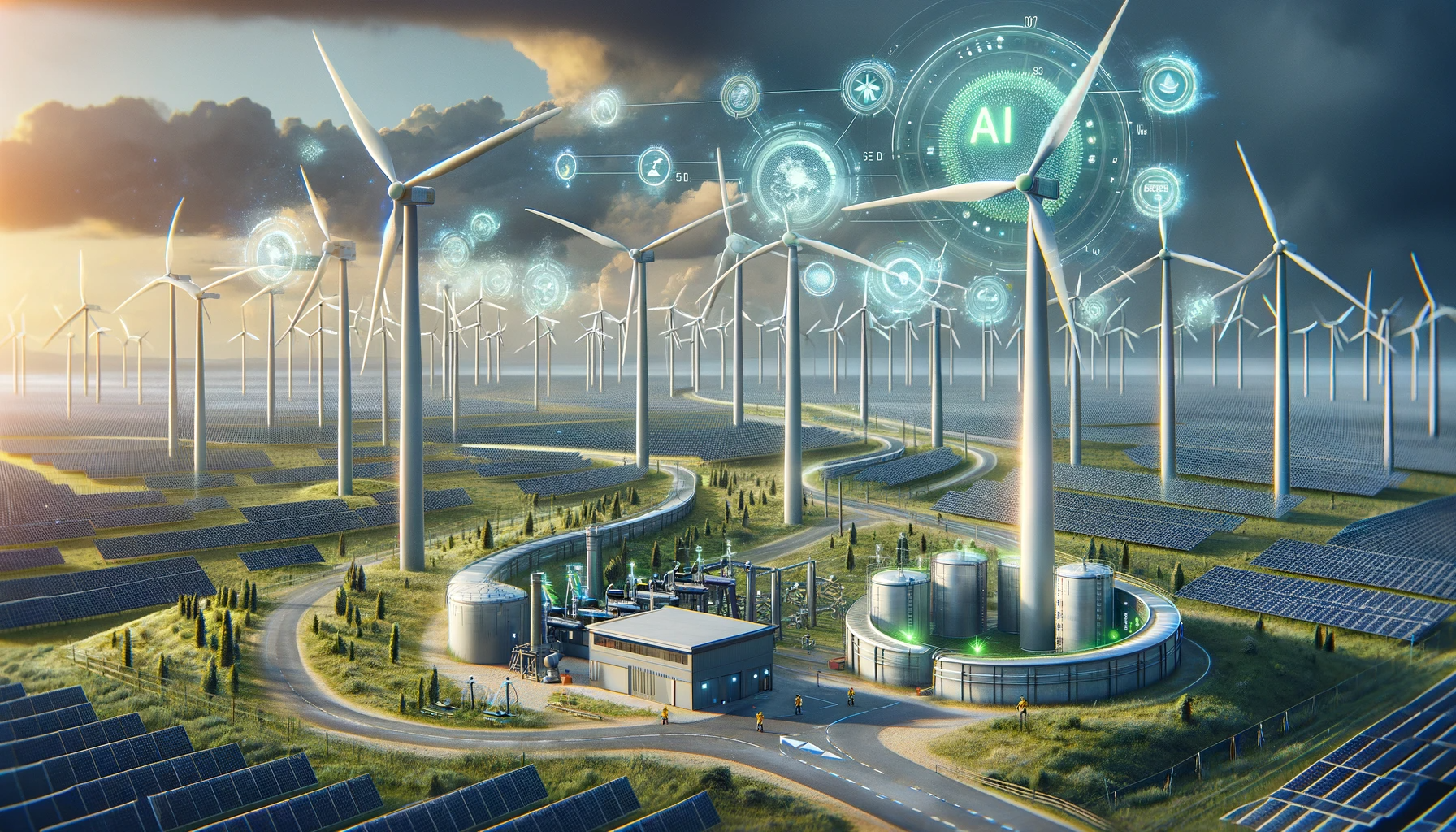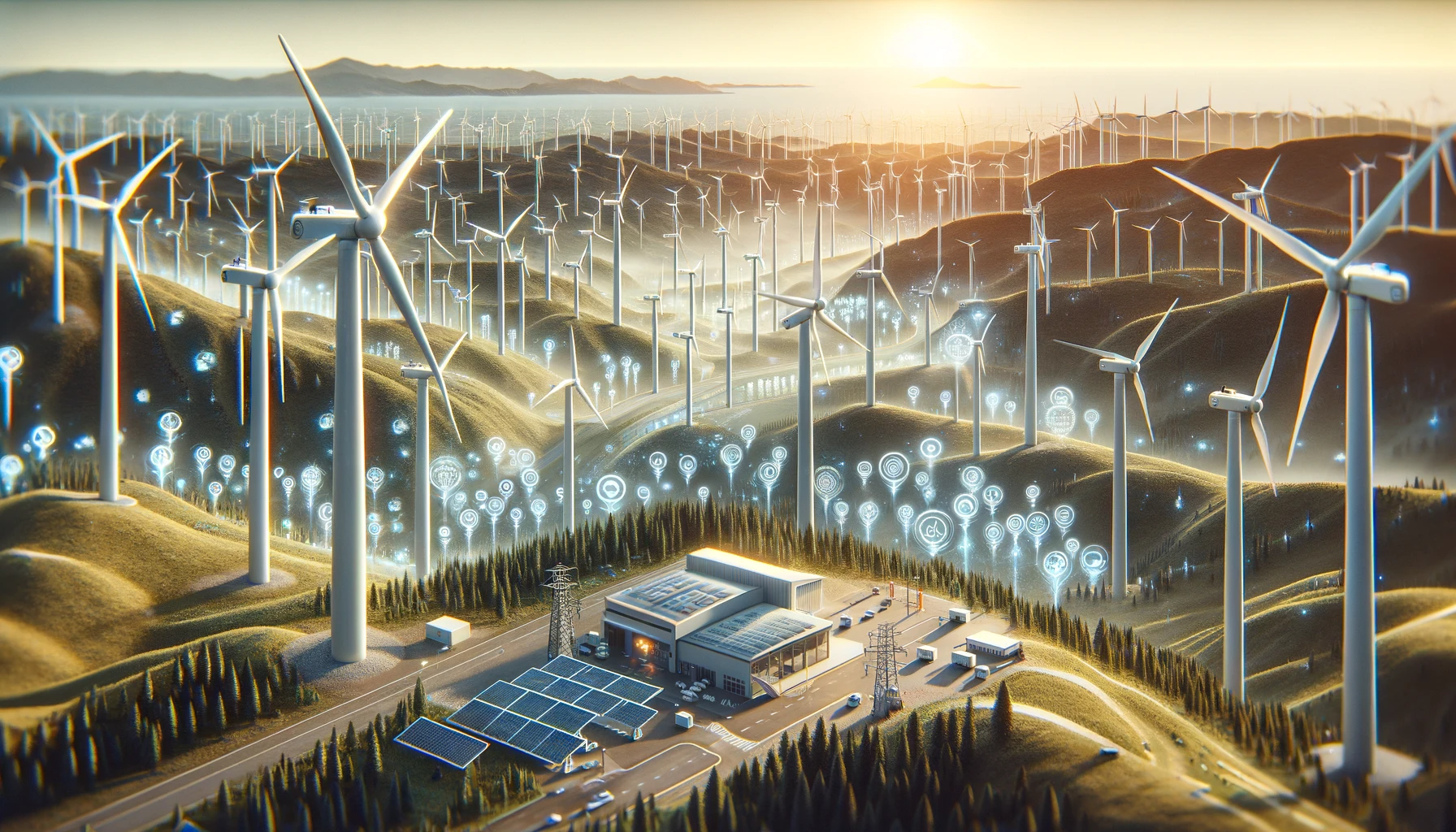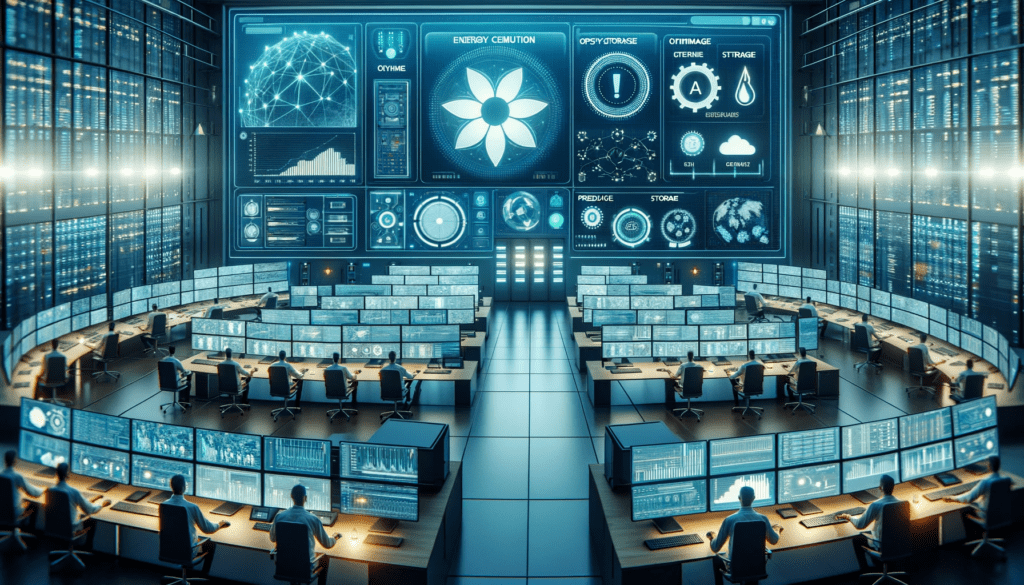Renewable energy, harnessing resources like the sun, wind, and water, is increasingly pivotal in the global shift towards sustainable energy solutions. As concerns over fossil fuels’ environmental impacts escalate, renewable energy sources emerge as vital alternatives. However, despite their environmental benefits, integrating these sources into our existing energy infrastructure poses significant challenges. Renewable energies are often variable and intermittent, making their storage and distribution complex and critical tasks.
One of the most promising solutions to these challenges lies in the realm of Artificial Intelligence (AI). AI has the potential to revolutionize the management of energy storage systems for renewable sources, optimizing their efficiency, distribution, and overall grid stability. By employing advanced algorithms and machine learning, AI can predict energy production trends, optimize storage, and balance supply with demand in real-time.
This article will explore the transformative role of AI in enhancing renewable energy storage and distribution. It will delve into how AI is being utilized to overcome the inherent challenges of renewable energy sources and how it’s reshaping the landscape of sustainable energy management for a more efficient and reliable future.
Renewable Energy: An Overview
Renewable energy sources like solar, wind, and hydroelectric power are essential in addressing the growing global energy demand while mitigating environmental impact. Unlike fossil fuels, these energy sources are abundant, sustainable, and, crucially, have a minimal carbon footprint. The transition to renewable energy is not just an environmental imperative but also a strategic move towards energy security and economic sustainability.
However, the utilization of renewable energy sources comes with its unique set of challenges. The main hurdle lies in their variability and unpredictability. Solar and wind energies, for instance, are dependent on weather conditions and time of day, leading to fluctuations in energy availability. This variability poses significant challenges in storage and distribution, as the energy supply must be reliably managed to meet the fluctuating demand.

Basics of Energy Storage and Distribution Systems
Energy storage systems are integral to maximizing the efficiency of renewable energy sources. These systems store excess energy produced during peak supply periods for use during times of low production. This balancing act is crucial for maintaining a consistent energy supply, especially with sources like solar and wind, which are inherently intermittent.
The role of distribution systems is equally vital. They ensure that the energy generated from renewable sources is efficiently transported from the site of generation to end consumers. This involves a complex network of transmission lines, substations, and transformers, all working together to maintain a steady and reliable energy supply.
Challenges in energy storage and distribution are manifold. They include the variability of renewable energy sources, the need for scalability in storage solutions, and the requirement for high efficiency in energy transmission and distribution. Overcoming these challenges is essential for the widespread adoption and success of renewable energy solutions.
AI in Renewable Energy Management
AI is increasingly being recognized as a transformative tool in renewable energy management. Its application in this field is multifaceted, ranging from predictive analysis to real-time system optimization. AI’s ability to analyze large datasets allows for accurate forecasting of energy production from renewable sources, which is crucial for planning and managing energy storage and distribution.
AI technologies used in the renewable energy sector include machine learning algorithms for weather and production forecasting, AI-enabled smart grids for efficient energy distribution, and AI systems for real-time monitoring and management of energy storage. These technologies enable more precise predictions of energy availability and demand, allowing for more effective balancing of energy loads and reducing wastage.
Optimizing Energy Storage with AI
AI plays a critical role in optimizing the storage of renewable energy. By accurately forecasting energy production and demand, AI systems can manage energy load effectively, ensuring that excess energy is stored during low-demand periods and made available during peak demand. This not only improves the efficiency of energy storage systems but also reduces wastage of renewable energy resources.
Case studies of AI implementation in energy storage demonstrate its effectiveness. For instance, AI-driven energy storage systems have been used in solar and wind farms to optimize the storage and release of energy, significantly enhancing the efficiency and reliability of these renewable sources.
Enhancing Energy Distribution and Grid Stability with AI
AI contributes significantly to the efficient distribution of renewable energy and maintaining grid stability. AI systems can dynamically adjust energy distribution based on real-time data, ensuring a stable and consistent supply despite the variability of renewable sources. This is particularly important in the context of smart grids, where AI is used to manage and balance energy flows from various sources.
Examples of AI applications in grid management include AI algorithms that predict energy demand fluctuations and adjust grid operations accordingly, and AI systems that detect and respond to faults in the grid, minimizing downtime and disruptions.
Challenges and Future Prospects
Implementing AI in renewable energy systems is not without its challenges. These include technical complexities, the need for substantial investment, and the integration of AI systems with existing infrastructure. Additionally, there are ethical and economic considerations, such as data privacy and the potential impact on employment in traditional energy sectors.
The future of AI in renewable energy storage and distribution, however, is promising. Continued advancements in AI technology are expected to further enhance the efficiency and reliability of renewable energy systems, paving the way for a more sustainable and energy-secure future.

Conclusion
In conclusion, AI’s impact on renewable energy storage and distribution is profound. Its ability to manage and optimize these systems is key to overcoming the challenges associated with renewable energy sources, enhancing their efficiency, and ensuring grid stability. While there are hurdles to overcome, the potential benefits of AI in this field are immense, offering a pathway towards a more sustainable and reliable energy future. The continued evolution and integration of AI in renewable energy management will be pivotal in realizing the full potential of these vital resources.
